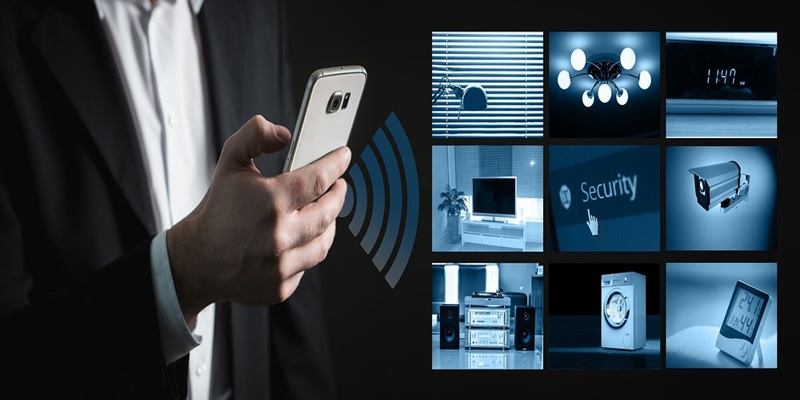The need for convenience, security, and energy efficiency is driving the rapid adoption of smart living technologies. One of the most transformative innovations reshaping modern homes is home automation. By integrating advanced systems into residential environments, home automation services offer intelligent solutions that enhance comfort, security, and overall lifestyle. As smart technology becomes more accessible, more homeowners are making the shift toward automated living spaces.
Understanding the Core Concept of Home Automation Services
Home automation refers to the use of technology to control various household systems and devices remotely. This includes lighting, climate control, security systems, entertainment units, and even appliances. All these systems can be connected through a central hub or smartphone app, giving users seamless control over their home environment.
Moreover, automation doesn’t just offer remote control—it enables smart decision-making. These systems can be programmed to operate based on schedules, motion detection, weather changes, or even voice commands. Whether it’s adjusting the thermostat before you arrive home or receiving an alert when someone rings the doorbell, home automation adds a layer of intelligence to everyday tasks.
The Key Components That Make Home Automation Effective
To fully appreciate the benefits of smart living, it is important to understand the essential components involved in home automation systems.
Smart Hubs and Controllers
At the heart of any home automation setup lies a central hub or controller. This device acts as the brain of the system, connecting all smart devices and enabling users to manage them through a single interface. Popular examples include Amazon Echo, Google Nest Hub, and Samsung SmartThings.
Connected Devices and Appliances
From smart thermostats to Wi-Fi-enabled washing machines, connected devices form the backbone of home automation. These gadgets are embedded with sensors and connectivity features that allow them to interact with other devices and respond to commands.
Wireless Communication Protocols
Technologies such as Wi-Fi, Zigbee, Z-Wave, and Bluetooth allow devices to communicate with each other. Choosing the right protocol ensures that all components function harmoniously within the network.
Mobile and Voice Control Applications
Mobile apps and voice assistants like Alexa and Google Assistant provide intuitive ways to interact with your home. Through these platforms, you can manage everything from your lights to your locks, whether you’re inside the house or away on vacation.
Benefits of Home Automation That Go Beyond Convenience
Smart living is not just about luxury—it brings tangible benefits that improve quality of life, save money, and ensure peace of mind.
Enhanced Security and Surveillance
Home automation allows homeowners to monitor and secure their property 24/7. Smart cameras, doorbell systems, and motion detectors can alert users in real time, allowing immediate action. Furthermore, smart locks provide keyless entry and remote access control, which is particularly useful when granting access to guests or service providers.
Energy Efficiency and Cost Savings
By automating heating, cooling, and lighting, homeowners can significantly reduce energy consumption. For example, a smart thermostat can learn your schedule and adjust the temperature accordingly, avoiding unnecessary energy use. This leads not only to lower utility bills but also to a reduced environmental footprint.
Improved Accessibility for All Age Groups
Home automation can be especially helpful for senior individuals or people with disabilities. Features such as voice control, automated lighting, and sensor-based systems simplify daily tasks, improving independence and comfort.
Seamless Entertainment Integration
From multi-room audio systems to automated home theaters, smart technology enhances the entertainment experience. You can set the mood with lighting and music, or schedule your TV to record your favorite show—all from a single interface.
Emerging Trends in Home Automation Technology
As technology transform, so do the capabilities of home automation systems. Here are some exciting trends shaping the future of smart living.
Artificial Intelligence and Machine Learning
Modern systems are becoming increasingly intelligent. AI enables devices to learn user habits and adapt accordingly. For instance, your lighting system might learn when you usually wake up and automatically adjust brightness to help ease you into the day.
Integration with Renewable Energy Solutions
Smart homes are now being designed with solar panels and energy storage systems in mind. Home automation can regulate energy usage based on availability and store surplus energy, making homes more sustainable and cost-efficient.
Voice and Gesture Control Advancements
Beyond smartphones and tablets, gesture and voice-controlled systems are becoming more responsive. These innovations make interactions more intuitive and reduce dependency on physical devices.
Greater Interconnectivity Through IoT
The Internet of Things (IoT) has made it possible for a wide array of devices to communicate seamlessly. From refrigerators that notify you when groceries are low to sensors that detect water leaks, the possibilities are expanding fast.
What to Consider When Choosing a Home Automation Service Provider
Selecting the right service provider is crucial for a successful smart home experience. Here are some essential factors to keep in mind:
Reliability and Compatibility
Make sure the system supports the devices you intend to use and is reliable under different conditions. A reputable provider should offer solutions that are compatible across various platforms and ecosystems.
Customization and Scalability
Your smart home system should grow with your needs. Look for providers that offer flexible solutions that can be expanded or upgraded over time.
User Support and Maintenance
Customer support is vital in case of technical issues or system upgrades. Choose a provider with a solid reputation for after-sales service and technical assistance.
Cost and Warranty
Finally, evaluate the total cost, including installation, maintenance, and future upgrades. Ensure there’s a clear warranty policy to protect your investment.
How Home Automation Is Transforming Everyday Living
The adoption of home automation is more than a trend—it represents a lifestyle shift. Today’s smart homes are about creating environments that are responsive, intuitive, and tailored to individual needs. Whether it’s simplifying daily routines, enhancing comfort, or safeguarding loved ones, home automation brings a new level of control to residential living.
Additionally, with growing concerns about environmental sustainability, smart systems play a key role in promoting responsible energy use. From the moment you wake up to when you go to bed, automated systems work quietly in the background, making life easier and more efficient.
Final Thoughts
Home automation services are revolutionizing the way we live. As technology becomes more advanced and affordable, there’s never been a better time to invest in smart living solutions. These systems not only bring convenience but also add tangible value to your home, improve security, and enhance your lifestyle.
By understanding the options available and choosing the right provider, you can transform your home into a personalized haven of innovation and efficiency. The future is not just digital—it’s intelligent. And with home automation, that future is already here.































